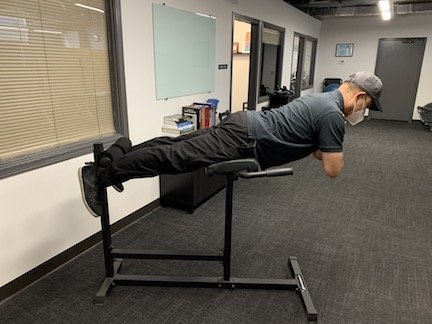As I discussed in my previous blog post, the human body has a continuum from the feet to the head and out to the hands of an inter-dependent system of stability and mobility. Starting with the feet there is an alternating pattern of Stability-Mobility that progresses upward. If the feet are not stable, this can result in compensations up the human kinetic chain as the body attempts to re-balance this continuum. I discuss this in detail in my book, “Fulcrum-Lever-Sport: A Handbook of BioMechanics for Improved Performance and Injury Prevention” and want to highlight some of the points in this post.
I see numerous patients every week who complain of issues in their knees, hips, backs and even up higher that can be traced back to a lack of stability in one or both of their feet. When I ask them about specific “training” of their feet, they most often share with me previous attention that has been paid to the mobility and/or training of their ankles. The intrinsic muscles of their feet have not been specifically trained for the task(s) that the patient is demanding of them.
*** Clarification: For explanation sake, I like to classify two ~”types” of muscles in and of the feet; the intrinsic and the extrinsic muscles. The intrinsic muscles begin and end in the foot and are primarily involved in providing stability to the arch(es) of the foot. The extrinsic muscles begin (usually) in the lower leg and end (usually) in the foot and are primarily involved in providing mobility of parts of the foot and the ankle.***
Not specifically addressing the intrinsic muscles of the feet, results in not specifically addressing the issue. Gaining benefit from ancillary training of any area in the body, provides mediocre results at best. And in this case training the muscles one step higher up the system (the ankle versus the foot) may help to a degree, but will not specifically address the root cause of the problem.
As I discuss, in my book, the foot can be seen as an interesting fulcrum (the muscles and bones of the arch(es)) with a lever arm (the lower leg - tibia and fibula) coming up from the hinge point (the ankle joint). The fulcrum needs to be stable in order to provide mobility to the lower leg across the ankle joint. Again, when the foot/fulcrum is not stable, problems can arise up the chain.
The foot is actually comprised of two main arches, a main longitudinal arch and a main transverse arch. We commonly refer to the “arch of the foot” as the bottom of the foot from the heel to behind the big toe, this being the longitudinal arch. And there is another arch that travels behind the balls of the feet on the bottom of the foot from behind the big toe to behind the pinky toe, this being a transverse arch. For optimal function of the foot and in order to provide a stable platform, BOTH of these arches need to be functioning properly. In addition, both of these arches need to be trained specifically and individually before they can be used and trained as part of the larger system. Without specific training, the best we can hope for is secondary and mediocre training and thus results. Even when training barefoot, unless we are specifically addressing the intrinsic muscles of the feet and both arches, we are only secondarily training an extremely important part of the overall functional system of the body.
Barefoot training during squats, deadlifts, or other non-specific exercises is great for overall integration and activation of the feet into the whole system, yet may be integrating and activating a specific area that is lagging or in need of specific attention. We don’t want to integrate any piece into the overall system that is not optimal. It may lead to less than optimal function of the overall system by using less than optimal pieces.
Specific training of the feet (both longitudinally and tranversely) is simple and easily worked into any daily regimen with minimal equipment.
One of my favorite daily exercises, primarily for the longitudinal arch, is the Ankles Roll Foot Active exercise. For this exercise, barefoot on a firm surface, Roll your ankles in - raise all your toes up, pause, then roll your ankles out - scrunch your toes and flex your feet to grip the earth, pause, repeat back and forth slowly but surely.
Along the same lines, one of my favorite exercises for the foot that primarily stimulates the transverse arch is The Banded Big Toe Heel Raises exercise. While this also trains the longitudinal arch, it also - by means of providing traction across the base of the big toe - stimulates and activates the transverse arch which lies behind the balls of the feet. For this exercise take a light band around both big toes, with feet slightly less than hip width (enough to provide a slightly uncomfortable stretch on the big toes), and with relaxed feet rise up on your relaxed toes. Repeat this slowly but surely up and down.
In my clinical experience, these two exercises begin the process of activating and specifically training the intrinsic muscles of the feet so that they are capable of providing a stable platform under a mobile ankle, and integrate into the rest of the stability-mobility continuum up the rest of the body.
If you have any questions, please do not hesitate to contact me!
Michael Ross DC, CSCS, DACRB




